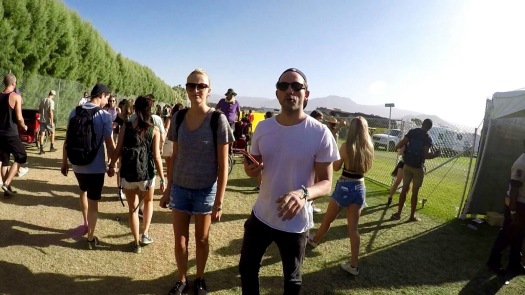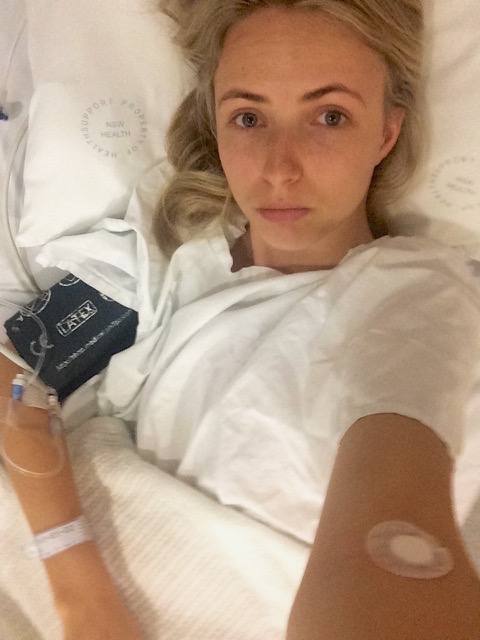Getting my diagnosis for adenomyosis was one of the most psychologically traumatic experiences. On the one hand, I was so relieved when the doctor said he could see this additional disease on my scans and during the lap, because it explained why I was still in so much pain after TWO excision surgeries for endometriosis. On the other hand, the treatment options according to my surgeon were hormones (which I react badly to) or hysterectomy. I was devastated. I wanted a family above all else. But I was in so much pain every day. This was the beginning of a health journey to find other ways to cope with the constant uterine cramping and contractions. I sought a second opinion from a renowned gynaecologist and was referred to a pelvic physiotherapist.Not only did she help to reduced the tension and spasms occurring in the surrounding pelvic muscles, but it provided a much needed outlet for my struggle with this disease on a weekly basis.
Today I interviewed the lovely Dr Susie Gronski to provide you with all the info about pelvic PT and hopefully help you on your journey to a pain-free life.

Me: How did you get into pelvic PT?
Susie: Funny that you ask! I think pelvic floor PT found me <chuckle>. After graduating from PT school, I couldn’t sit still. I’ve always been interested in neurology and focused my career on working with patients who’ve experienced a stroke, traumatic brain injury, spinal cord injuries, balance disorders, and vertigo (fancy term for dizziness). To tell you the truth, I was bored. I kept wringing the juice out of each job and looking for bigger challenges. Then one day a friend of mine told me about an opportunity to observe a pelvic floor therapist in my area as she was looking to hire on another therapist and was willing to provide training. At the time, pelvic floor PT never crossed my mind! My gut was telling me to pursue this curiosity of mine, so I did. I’m so glad I did! I discovered my heart’s passion for pelvic floor therapy and visceral manipulation, both of which have changed my life, professionally and personally. Since discovering my niche for such a specialty, I’ve transitioned into private practice where I have the freedom to provide care without limitations. Quality care that I believe everyone’s entitled to.
Me: What are some of the common issues you see and treat?
Susie: This one is tough to answer mainly because I see a variety of conditions in my clinic. I treat both men and women and generally the most common issues are pelvic pain. I also see patients with the following:
- bladder issues, such as: urinary urgency-frequency (having the urge to urinate frequently), stress urinary incontinence (loss of urine with activity), or a combination of both
- bowel issues – constipation, IBS, bloating, slowed intestinal motility, hemorrhoids
- tailbone pain while sitting
- pain with intercourse and/or pelvic exams
- difficulty with orgasm
- erectile dysfunction
- prostatitis; also known as chronic pelvic pain in men
- pregnancy related pain and post-partum care
- adhesions – from abdominal/pelvic surgery or inflammation
- pelvic pain associated with endometriosis
- post-prostatectomy related erectile dysfunction and urinary issues
- penis pain
- nerve entrapment syndromes
The list could go on and on! One of the many reasons why I love pelvic floor PT is for the variety of conditions seen and the challenge of creating a treatment plan specific for each patient’s individualized needs and goals.
Me: How can pelvic PT benefit women with endometriosis or chronic pelvic pain?
Susie: In one study I’ve read, approximately 30-50% of women with chronic pelvic pain have endometriosis. Some go undiagnosed and many have the disease but are asymptomatic. A common issue that I see with women who have endometriosis is deep pelvic pain with intercourse, disrupting their overall quality of life and satisfaction. Typically, those with pelvic pain have over active pelvic floor muscles that are guarded and shortened. Pelvic floor PT can help by releasing tight pelvic floor muscles, manually working to release tender points and connective tissue restrictions found during the exam.
Aside from just working inside the pelvis, it’s also beneficial to look at the supporting pelvic structures, such as: hips, abdomen, and spine in order to rule out any other contributing factors to sub-optimal pelvic floor function. I always say that the pelvic floor is like a trampoline. It needs to be elastic to function properly. I also think visceral manipulation has excellent outcomes when it comes to pelvic pain and adhesions (fibrous bands that form between tissues and organs) that result from the endometrial tissue itself or from surgery. Pain in the pelvis can be referred from organs, and in cases such as endometriosis, it’s important to assess the mobility of the bladder, uterus, and rectum. Endometrial tissue can proliferate in between these organs and within the pelvic wall itself, therefore mobilizing pelvic organs can definitely help create balance within the pelvis by improving fluid dynamics, decreasing pelvic congestion, and abnormal tissue tension that might be compromising sensitive nerves through the pelvis. A healthy organ is a mobile organ. Motion is lotion!
Other helpful treatments include regulating the nervous system down with deep, diaphragmatic (belly) breathing, guided relaxation of pelvic floor muscles, pelvic stretches, functional movement integration, etc. Every patient that walks through the door is unique and should be treated as such. There isn’t a cookie-cutter treatment protocol for those with pelvic pain. You kind of just have to do what works best for that patient.
Aside from all the hands-on work therapists can provide, I feel that the support and coaching that therapists provide is priceless. I’ve been blessed to be able to provide a safe space for my patients to tell their story. To be heard. To be listened to. The greatest gift is often times silence. It’s unfortunate that I still hear things like, “I tried to tell the doctor but they just didn’t listen to me.” I’m a firm believer in trusting our body’s own inner wisdom to heal. As a pelvic floor PT, I feel that it’s very important to not only educate patients about pelvic floor anatomy and function but to also support and empower them to be their own healthcare provider; trusting in their own intuition to make the best healthcare decisions available to them.
Me: Are there any strategies women can use if they are at home and in pain?
Susie: Great question! I encourage everyone to practice B.L.I.S.S.I.P.L.I.N.E
Here’s what it means:
Breathe- do practice deep belly breathing throughout the day
Laugh- laughter is therapeutic. You can only experience one emotion at a time, so laugh often!
Invest- investing in your health is the greatest gift you can ever give yourself
Silence- take 5 min out of your day to be in the moment, meditate often
Stretch- gentle stretching helps increase circulation, improves mental health and flexibility. Also helps relax pelvic floor tension.
Intuition- trust in your own body’s inner wisdom to heal. Follow your gut when making decisions about your health. Remember, you’re your own best healthcare provider.
Positiveness- your perspective is everything! If you think it, it must be true.
Let go- relax and treat yourself. Even if it’s wearing a sexy pair of underwear! A great quote: “pain is an ideal habitat for worry to flourish”- Eccleston
Ink- there’s something about writing it down on paper. Keeping a journal helps cope with anxiety and stress improving your overall mental health and wellness.
Nourish- eat real food and hydrate, hydrate, hydrate! Eliminate sugars, processed foods, and artificial preservatives. Start incorporating foods that are more anti-inflammatory.
Exercise- add in a little bit of light activity to your day. This could range anywhere from talking a short walk to just putting the dishes away. Make “exercise” fun and modify it to your lifestyle. Remember, “motion is lotion and rest is rust”- Mike Stewart
Me: Do you have any thoughts you would like to share with women suffering from pelvic pain?
Susie: No one ever said the journey would be easy but they also didn’t say that you can’t love yourself along the way.
 _________________________________________________________________
_________________________________________________________________
Dr. Susie Gronski, DPT, PRPC is a Doctor of Physical Therapy and a Certified Pelvic Rehabilitation Practitioner. She has a private practice in Willow Springs, IL where she treats men, women, and children with pelvic health conditions. She loves blogging and staying connected with her followers. Her mission is to spread the word about taboo health subjects with a little twist of humor. If you’d like more health tips from the pelvic expert please join her community and connect with her on:
 https://www.facebook.com/drsusieg/
https://www.facebook.com/drsusieg/
 @dr.susieg
@dr.susieg
 @drsusieg
@drsusieg
_________________________________________________________________
p.s. check out Susie’s website www.drsusieg.com for my interview with her on living with endometriosis.











